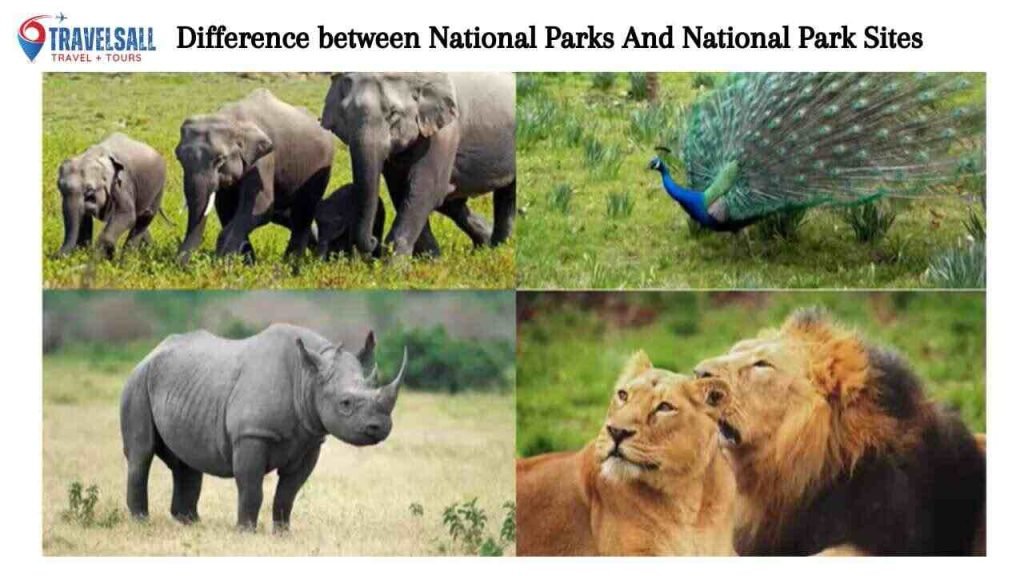The difference between National Parks And National Park Sites is that National Parks are large natural areas protected for conservation.
While National Park Sites can include historical sites, monuments, or smaller areas of interest. Both are managed by the National Park Service but serve different purposes.
Exploring the variety of America’s federally protected lands reveals a network of natural and historical treasures.
National Parks are iconic expanses like Yellowstone and Yosemite, where the wilderness is preserved and wildlife roams freely. Their primary goal is to protect natural landscapes and ecosystems on a grand scale.
On the other hand, National Park Sites encompass a broader spectrum. It includes battlefields, historic homes, and cultural landmarks such as the Statue of Liberty.
The National Park Service safeguards 400+ sites of historical, natural, and cultural importance for public education and enjoyment.
Each site, whether a vast park or a singular monument, forms chapters in the nation’s collective narrative. It offers visitors a chance to experience the richness of America’s heritage and natural beauty.
Table of Contents
ToggleNational Treasures Explained
National parks and national park sites sparkle like jewels across the country. They protect beautiful landscapes and cultural resources.
Together they tell a story of the nation’s rich history and natural beauty. Let’s dig into the world of these protected spaces and discover their unique characteristics and importance.
The Concept Of National Parks
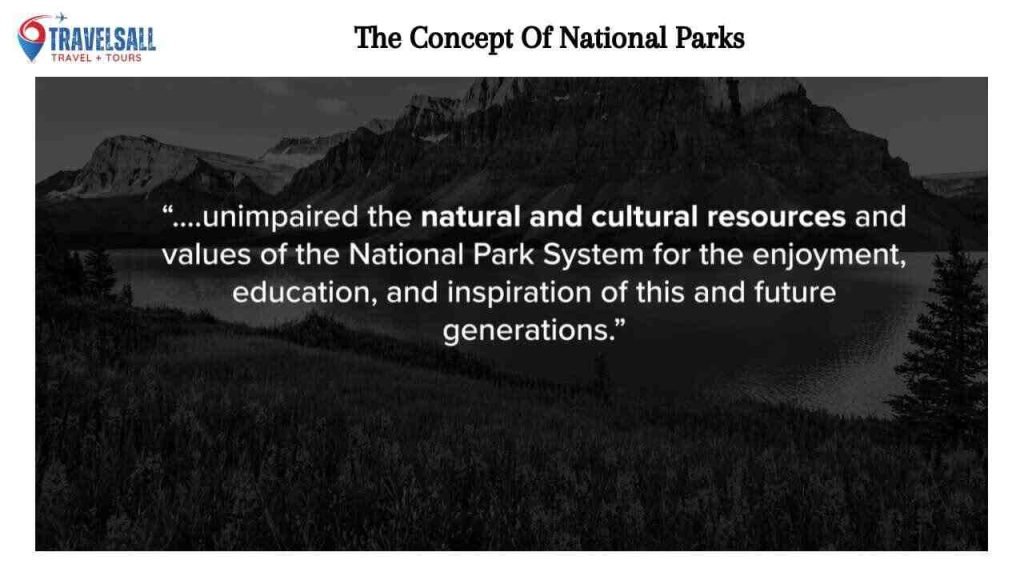
National parks represent the pinnacle of nature’s majesty. Established by the government, these parks serve many purposes.
They protect remarkable natural environments, offer space for research, and provide stunning landscapes for visitors to enjoy.
From the towering sequoias of Yosemite to the rugged peaks of the Rocky Mountains, these parks are outdoor playgrounds loved by millions.
- Conservation: National parks preserve ecosystems.
- Recreation: They are open to public enjoyment.
- Cultural Significance: Many have historical landmarks.
What Are National Park Sites?
National park sites encompass a broader category. They can be historic sites, monuments, battlefields, or seashores.
Unlike national parks, which are typically large natural areas, park sites focus on specific historical or cultural significance. Each site tells a piece of the American story.
| Type of Site | Examples | Main Focus |
|---|---|---|
| Historic Sites | Lincoln Home, Thomas Edison’s Lab | Historical buildings and artifacts |
| Monuments | Statue of Liberty, Fort Sumter | Memorials and landmarks |
| Battlefields | Gettysburg, Antietam | Historic military sites |
| Seashores | Cape Hatteras, Point Reyes | Coastal areas with natural and historic features |
In summary, national parks showcase stunning natural environments. National park sites include a variety of locations with historical, cultural, or environmental importance.
Both play vital roles in conservation and education, offering unforgettable experiences for all who visit.
History And Evolution
The concept of preserving natural spaces has a rich history. It has evolved into a diverse network of protected areas.
These areas include both National Parks and National Park Sites. Let’s explore the intriguing journey from the inception of the national park idea to the proliferation of national park sites.
Origins Of The National Park Idea
The idea of national parks began as a revolutionary way to preserve nature. Yellowstone National Park became the first ever when it was established in 1872.
The goal was to keep wild lands free from commercial exploitation. Society sought to protect these sacred spaces for public enjoyment and conservation.
Expansion Into National Park Sites
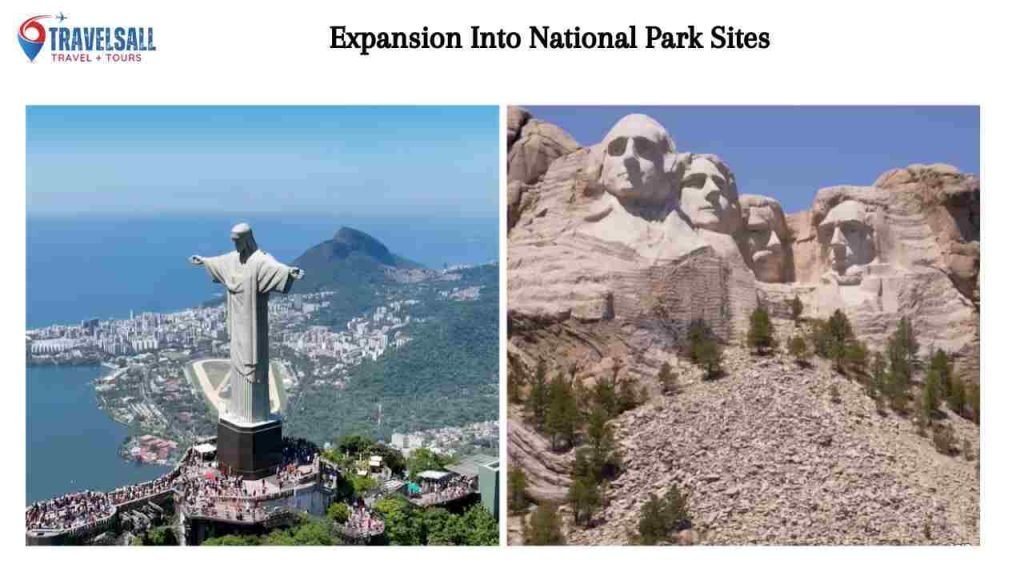
The initial success of national parks inspired further action. The US government began protecting other unique natural, historical, and cultural resources.
The term “National Park Sites” now includes monuments, battlefields, and seashores.
This diversification has led to a broader approach to conservation. It also ensures a wider range of experiences for visitors.
- National Monuments often protect historical landmarks.
- Historic Sites focus on locations of significant cultural importance.
- Recreation Areas cater to outdoor activities.
Legal Framework
The distinction between National Parks and National Park Sites extends beyond scenic beauty or wildlife variety. It’s entrenched in legal texts that govern how each park and site operates.
Legislation Governing National Parks
At the heart of National Parks, legislation stands as the principal guide. The National Park Service Organic Act of 1916 began a century-long journey of environmental stewardship in the United States.
- This act mandates the conservation of scenery, natural and historic objects, and wildlife.
- It ensures parks are available for public enjoyment in a way that leaves them unimpaired.
The wise use of these lands balances enjoyment with conservation.
Other acts such as The Wilderness Act and Endangered Species Act play a role too. Together, they form a protective blanket over these national treasures.
Regulations For National Park Sites
National Park Sites can include monuments, seashores, and historical parks. These areas fall under a broader scope.
- Designations and rules can differ from those of National Parks.
- They might be established through presidential proclamation.
- Congressional statutes also serve to create and manage these sites.
Despite the differences, the thrust of the regulations remains the protection of the country’s diverse heritage.
| National Parks | National Park Sites |
|---|---|
| Protected by specific acts such as the Organic Act | Ruled by a variety of presidential and congressional decisions |
| Focused on conservation and public enjoyment | Includes a broader range of protected areas |
The laws ensure that the integrity and essence of these places are preserved for future generations to treasure. Mastering the legal framework helps us appreciate the importance of preservation efforts.
Scope And Size
Exploring the scope and size of National Parks and National Park Sites reveals exciting differences. These protected areas range from massive tracts of wilderness to historic landmarks.
Let’s dig into how they compare in terms of size and the variety of ecosystems they encompass.
Size Comparison
National Parks often span vast areas, sometimes thousands of square miles. On the other hand, National Park Sites can be much smaller. For a clear view, consider the following table:
| Type of Park | Average Size |
|---|---|
| National Park | Varies greatly, going up to millions of acres |
| National Park Site | Often less than 100,000 acres |
National Parks like Yellowstone cover a staggering 2.2 million acres. Smaller National Park Sites, such as historical houses or monuments, may cover only a few acres.
Variety In Ecosystems
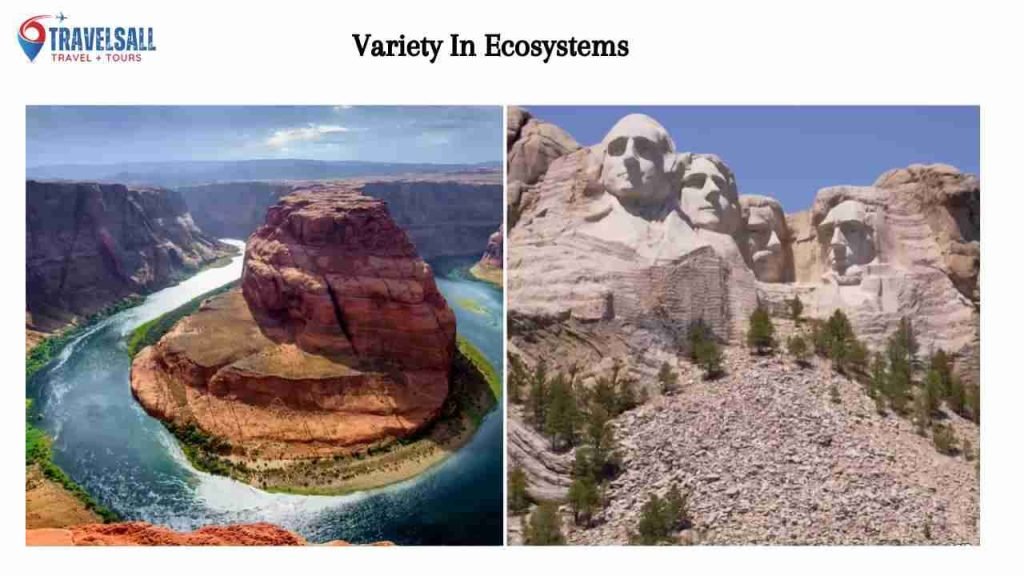
National Parks protect diverse ecosystems, from mountains to deserts. National Park Sites, while smaller, preserve unique natural habitats and historical settings. The list below highlights these differences:
- National Parks: May include forests, lakes, and wildlife habitats
- National Park Sites: Typically focus on specific cultural, historic, or natural features
In sum, National Parks offer extensive areas to explore, while National Park Sites provide a focused glimpse into America’s natural and historical treasures. Both play vital roles in conservation and education.
Management And Operations
Knowing the management and operations of America’s vast expanses of protected land is crucial.
National Parks and National Park Sites both aim to preserve natural beauty and cultural heritage. Their management often sets them apart.
Administering National Parks
National Parks represent some of the most iconic landscapes in the U.S. The National Park Service (NPS) oversees these parks.
Each park has a dedicated staff including park rangers, scientists, and administrators. The staff works together to manage natural resources and provide visitor services.
These services include educational programs, guided tours, and emergency assistance.
- Dedicated funding often comes from Congress.
- Park-specific regulations are set to protect the unique resources of each park.
- Resource management focuses on conservation and restoration efforts.
Overseeing National Park Sites
National Park Sites, such as historical sites and monuments, also fall under NPS management. These sites often highlight specific historical or cultural resources.
A range of staff similar to those at National Parks, manages these sites.
| Aspect | National Park Sites Management |
|---|---|
| Funding | This may include partnerships or grants |
| Regulations | Varies based on the site’s needs and focus |
| Resource Management | Targets specific cultural or historical conservation |
Both National Parks and National Park Sites strive to protect America’s natural and cultural treasures. The distinct ways in which they are managed are vital to fulfilling their missions.
Objectives And Missions
National parks and national park sites both serve crucial but distinct roles in environmental and cultural preservation.
Each type of protected area has unique objectives and missions critical to knowing their importance and the difference between the two.
Conservation Goals Of National Parks
National parks aim to safeguard natural landscapes and wildlife. Their primary focus is to maintain biodiversity, ensuring ecosystems thrive.
Parks maintain the ecological integrity of these areas for the enjoyment of future generations and research purposes. These are some key goals:
- Protection of ecosystems and their biodiversity.
- Promotion of conservation efforts and sustainable practices.
- Support for scientific research and educational initiatives.
- Offering recreational opportunities that are in harmony with nature.
Cultural And Historical Objectives Of Park Sites
National park sites, which include historical sites, monuments, and memorials, focus on honoring significant cultural, historical, and archaeological stories of the nation.
They preserve important landmarks and educate the public. Here are some objectives:
- Preserve architectural marvels and historical landmarks.
- Commemorate events and figures that played a key role in history.
- Educate the public about cultural heritage and historical lessons.
- Create an environment for reflection and inspiration through history.
Recreational Activities
Exploring the beauty of nature becomes thrilling with the right activities. National Parks and Park Sites offer adventures tailored to their unique landscapes.
Whether seeking the rush of adrenaline or a peaceful escape, these public lands cater to all passions.
Activities In National Parks
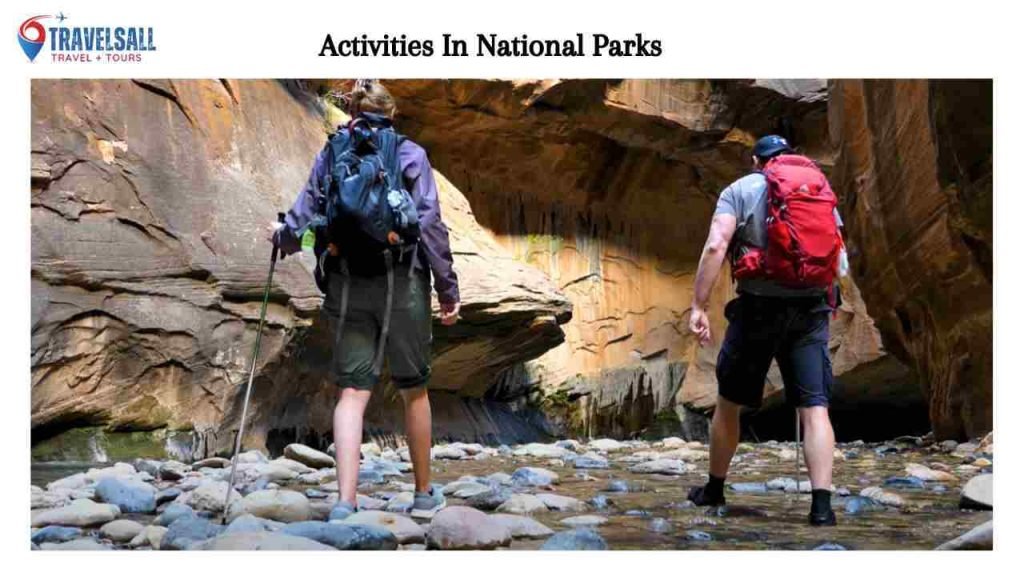
National Parks are playgrounds for nature lovers. These areas boast an array of activities suitable for all age groups. Below is a guide to popular activities:
- Hiking – Traverse varied trails, from easy walks to challenging treks.
- Camping – Connect with nature overnight under twinkling stars.
- Wildlife Watching – Spot rare creatures in their natural habitats.
- Kayaking and Canoeing – Paddle through serene lakes and rivers.
- Photography – Capture stunning landscapes and wildlife moments.
Experiences Unique To Park Sites
Park Sites hold special experiences not found in larger National Parks. Discover activities that are exclusive to these historical and cultural treasures:
| Park Site | Unique Activity |
|---|---|
| Historical Battlefields | Live reenactments of historical events |
| Cultural Monuments | Guided tours with stories of past civilizations |
| Seashores | Shell collecting and tide-pool exploration |
Funding And Economic Impact
Funding and Economic Impact plays a crucial role in maintaining the beauty and accessibility of our National Parks and National Park Sites.
Each park relies on financial support to preserve the natural landscapes and heritage sites that captivate millions of visitors every year.
Apart from preservation, these parks also greatly contribute to the local and national economy.
Let’s dig into how these parks and sites secure funding and their impact on economic growth.
Financial Support For Parks
National Parks and National Park Sites depend on funds for operations, maintenance, and conservation efforts. These funds come from various sources, as outlined below:
- Federal Budget Allocations: A significant portion of the park’s budget comes directly from the government.
- Entrance and Activity Fees: Visitors contribute by paying for access and certain amenities.
- Donations and Partnerships: Private contributions and collaborations with non-profits add to the funding pool.
- Grants: Parks may receive grants for specific conservation projects or educational programs.
These sources ensure the parks continue to offer breathtaking experiences while maintaining ecosystems.
Economic Contributions Of Park Sites
The financial impact of National Parks and Park Sites extends beyond their borders, fueling economies both locally and nationwide:
| Aspect | Impact |
|---|---|
| Visitor Spending: | Money spent on lodging, food, and activities supports local businesses. |
| Job Creation: | Both park operations and tourism generate employment opportunities. |
| Tax Revenue: | Increased economic activity results in higher local and state tax revenues. |
The economic engine driven by National Parks and Park Sites not only preserves natural treasures but also sustains communities.
Challenges And Future Directions
National Parks and National Park Sites hold the keys to natural treasures. They face unique challenges today. These obstacles dictate their future. We must understand and address them.
Preservation Challenges
Our National Parks and Park Sites are under threat. Climate change tops this list, with rising temperatures.
Wildfires and severe weather test resilience. Biodiversity loss and invasive species further the threat.
- Climate Impact: Ecosystems alter, affecting habitats.
- Visitor Pressure: Over-crowding leads to wear and tear.
- Infrastructure Strain: Aging facilities need urgent upgrades.
- Funding Gaps: Limited resources hamper preservation efforts.
Looking Ahead: National Parks Vs. Park Sites
The future holds new strategies for National Parks and Park Sites. They differ in size and significance, yet face similar fates. Innovation is key in conservation.
Future Strategies:
- Collaborative Management: Engage local communities.
- Climate Adaptation: Develop resilient ecosystems.
- Sustainable Tourism: Balance nature and visitor experience.
- Enhanced Funding: Secure investments for critical projects.
National Parks and Park Sites each need tailored solutions. A comprehensive plan that embraces modern challenges will ensure their survival for generations.
| National Parks | National Park Sites |
|---|---|
| Broad landscapes | Specific monuments or areas |
| Conservation focused | Historical or cultural emphasis |
Frequently Asked Questions On Difference Between National Parks And National Park Sites
What Is The Difference Between National Parks And National Sites?
National parks protect natural landscapes and ecosystems, while national sites preserve places of historic, cultural, or scientific significance. National parks typically offer more recreational opportunities compared to national sites.
What Is A National Site?
A national site is a location recognized by a country for its cultural, historical, or natural significance, often protected by law.
What Is The Difference Between A National Park And A National Park Preserve?
A national park is a protected area preserved for its natural significance, allowing limited human activity. A national park preserve is similar but may permit some extractive activities under specific conditions, such as hunting and mining.
How Many National Park Sites Are There?
As of 2023, the United States boasts 423 national park sites, encompassing diverse landscapes and historical landmarks.
Conclusion
Exploring the grandeur of nature can be confusing when terms like “National Parks” and “National Park Sites” come up.
The key takeaways from our discussion highlight the distinct purposes these protected areas serve.
National Parks are conservation powerhouses, preserving ecologically significant landscapes, while National Park Sites play a more varied role, often encompassing historic or cultural landmarks.
Remember, each visit to these treasures supports their ongoing preservation and contributes to our shared natural heritage.
As stewards of these spaces, it’s our joy to uncover their unique stories and safeguard them for future generations.

